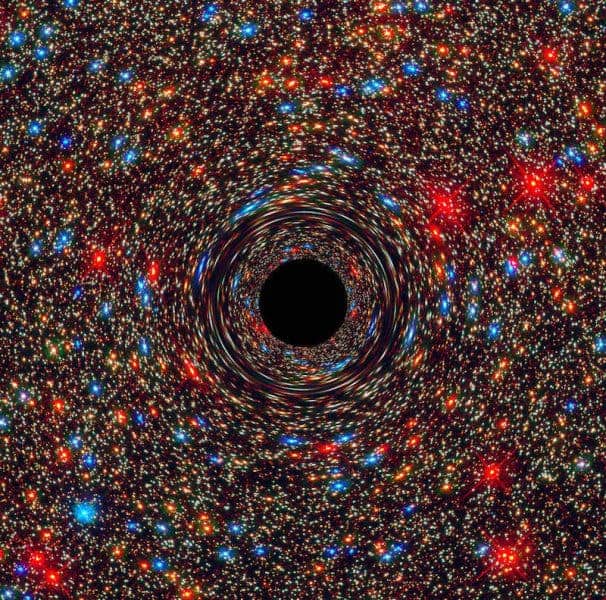In its seemingly insatiable hunger, the black hole gobbles up more and more of the space around it, devouring a Sun’s worth of mass every two days.

Black holes are the most massively dense objects we know of in the universe. They range from about 5 solar masses to billions of solar masses, in the case of the supermassive black holes found at the center of most galaxies. Because they’re so massive, black holes draw surrounding objects closer and closer to them, until they essentially gobble them up. So far, nothing new — black holes are massive, and they have the appetite to go with it. But this new black hole is voracious beyond anything we’ve ever seen, and no one really knows why.
“This black hole is growing so rapidly that it’s shining thousands of times more brightly than an entire galaxy, due to all of the gases it sucks in daily that cause lots of friction and heat,” said Dr Wolf from the ANU Research School of Astronomy and Astrophysics.
“If we had this monster sitting at the centre of our Milky Way galaxy, it would appear 10 times brighter than a full moon. It would appear as an incredibly bright pin-point star that would almost wash out all of the stars in the sky.”
We’re actually really lucky this object isn’t any closer to us. The energy it emits is mostly ultraviolet light, but the object also radiates vast amounts of X-rays, which would probably kill all life on Earth, Wolf says.

The black hole in case is a so-called quasar: an extremely bright active galactic nucleus which emits energy throughout the entire spectrum — at radio, infrared, visible, ultraviolet, and X-ray wavelengths. This particular quasar was discovered by analyzing light in the infrared range of the spectrum — through the so-called redshift effect. Redshift takes place when light or other electromagnetic radiation from an object is increased in wavelength, which in this case occurs because the universe is expanding, and the black hole is far enough to make this effect noticeable.
“As the Universe expands, space expands and that stretches the light waves and changes their colour,” Dr Wolf said.
“These large and rapidly-growing blackholes are exceedingly rare, and we have been searching for them with SkyMapper for several months now. The European Space Agency’s Gaia satellite, which measures tiny motions of celestial objects, helped us find this supermassive black hole.”
Interestingly, this type of object can also be used to study other things — because it’s so luminous, it shines a lot of light on its surroundings. As Wolf himself says, the object is so massive it makes the universe more transparent, and easy to study.
“Scientists can see the shadows of objects in front of the supermassive black hole,” he said. “Fast-growing supermassive black holes also help to clear the fog around them by ionising gases, which makes the Universe more transparent.”
The object’s existence was already confirmed. These rapidly-growing black holes are extremely rare, and Wolf has been looking for them for months. Now, he is already looking for even hungrier ones.
Journal Reference: Christian Wolf, Fuyan Bian, Christopher A. Onken, Brian P. Schmidt, Patrick Tisserand, Noura Alonzi, Wei Jeat Hon, John L. Tonry. Discovery of the most ultra-luminous QSO using Gaia, SkyMapper and WISE. Publications of the Astronomical Society of Australia, 2018 (accepted); [link]



